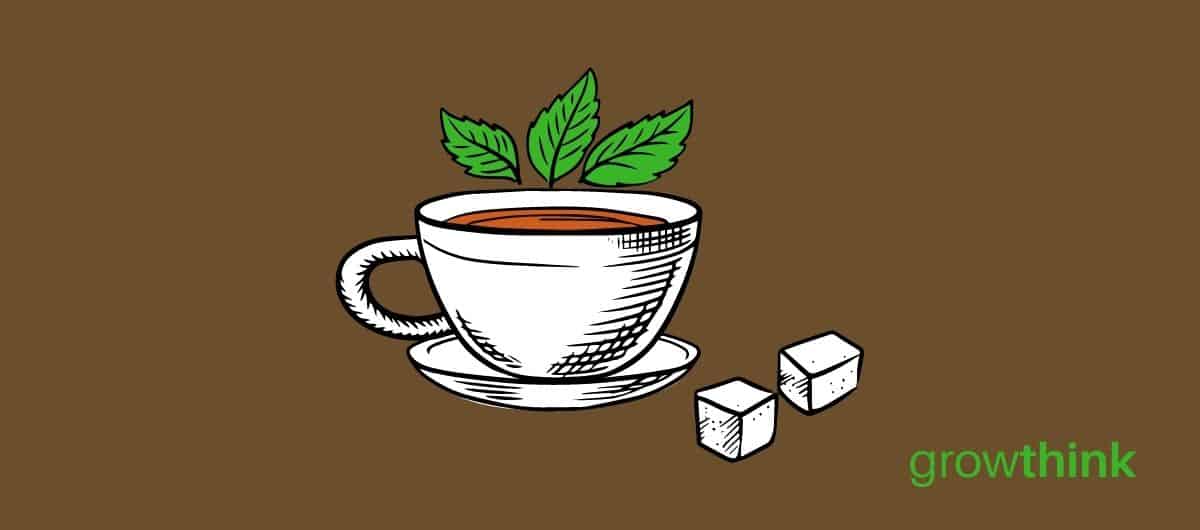Bubble Tea Business Plan
Over the past 20+ years, we have helped over 500 entrepreneurs and business owners create business plans to start and grow their bubble tea companies.
If you’re unfamiliar with creating a bubble tea business plan, you may think creating one will be a time-consuming and frustrating process. For most entrepreneurs it is, but for you, it won’t be since we’re here to help. We have the experience, resources, and knowledge to help you create a great business plan.
In this article, you will learn some background information on why business planning is important. Then, you will learn how to write a bubble tea business plan step-by-step so you can create your plan today.
What Is a Bubble Tea Business Plan?
A business plan provides a snapshot of your bubble tea business as it stands today, and lays out your growth plan for the next five years. It explains your business goals and your strategies for reaching them. It also includes market research to support your plans.
Why You Need a Business Plan for a Bubble Tea Business
If you’re looking to start a bubble tea business or grow your existing bubble tea company, you need a business plan. A business plan will help you raise funding, if needed, and plan out the growth of your bubble tea business to improve your chances of success. Your bubble tea business plan is a living document that should be updated annually as your company grows and changes.
Sources of Funding for Bubble Tea Businesses
With regards to funding, the main sources of funding for a bubble tea business are personal savings, credit cards, bank loans, and angel investors. When it comes to bank loans, banks will want to review your business plan (hand it to them in person or email to them as a PDF file) and gain confidence that you will be able to repay your loan and interest. To acquire this confidence, the loan officer will not only want to ensure that your financials are reasonable, but they will also want to see a professional plan. Such a plan will give them the confidence that you can successfully and professionally operate a business. Personal savings and bank loans are the most common funding paths for bubble tea companies.
Finish Your Business Plan Today!
If you’d like to quickly and easily complete your business plan, download Growthink’s Ultimate Business Plan Template and complete your plan and financial model in hours.
How to Write a Business Plan for a Bubble Tea Business
If you want to start a bubble tea business or expand your current one, you need a business plan. The guide and sample below details the necessary information for how to write each essential component of your bubble tea business plan.
Executive Summary
Your executive summary provides an introduction to your business plan, but it is normally the last section you write because it provides a summary of each key section of your plan.
The goal of your executive summary is to quickly engage the reader. Explain to them the kind of bubble tea business you are running and the status. For example, are you a startup, do you have a bubble tea business that you would like to grow, or are you operating a chain of bubble tea businesses?
Next, provide an overview of each of the subsequent sections of your plan.
- Give a brief overview of the bubble tea industry.
- Discuss the type of bubble tea business you are operating.
- Detail your direct competitors. Give an overview of your target customers.
- Provide a snapshot of your marketing strategy. Identify the key members of your team.
- Offer an overview of your financial plan.
Company Overview
In your company overview, you will detail the type of bubble tea business you are operating.
For example, you might specialize in one of the following types of bubble tea businesses:
- Mobile Bubble Tea Business: A mobile bubble tea business can get ready for customers and sell products anywhere, making this one of the most profitable bubble tea business ventures.
- Bubble TeaHouse: In this type of business, customers can lounge in comfort as they enjoy drinking bubble tea. The environment of a teahouse is relaxed, serene and inviting.
- Bubble Tea Bar: A bubble tea mobile bar or cart is the perfect way to start this business by moving among beachgoers, county fair attendees, guests in a park, or anyone on the street.
In addition to explaining the type of bubble tea business you will operate, the company overview needs to provide background on the business.
Include answers to questions such as:
- When and why did you start the business?
- What milestones have you achieved to date? Milestones could include the number of customers served, the number of months with positive cash flow, reaching X number of beaches with mobile bubble tea service, etc.
- What is your legal business structure? Are you incorporated as an S-Corp? An LLC? A sole proprietorship? Explain your legal structure here.
Industry Analysis
In your industry or market analysis, you need to provide an overview of the bubble tea industry.
While this may seem unnecessary, it serves multiple purposes.
First, researching the bubble tea industry educates you. It helps you understand the market in which you are operating.
Secondly, market research can improve your marketing strategy, particularly if your analysis identifies market trends.
The third reason is to prove to readers that you are an expert in your industry. By conducting the research and presenting it in your plan, you achieve just that.
The following questions should be answered in the industry analysis section of your bubble tea business plan:
- How big is the bubble tea industry (in dollars)?
- Is the market declining or increasing?
- Who are the key competitors in the market?
- Who are the key suppliers in the market?
- What trends are affecting the industry?
- What is the industry’s growth forecast over the next 5 – 10 years?
- What is the relevant market size? That is, how big is the potential target market for your bubble tea business? You can extrapolate such a figure by assessing the size of the market in the entire country and then applying that figure to your local population.
Customer Analysis
The customer analysis section of your bubble tea business plan must detail the customers you serve and/or expect to serve.
The following are examples of customer segments: individuals and families or friends.
As you can imagine, the customer segment(s) you choose will have a great impact on the type of bubble tea business you operate. Individuals may respond to different marketing promotions than a group of friends,, for example.
Try to break out your target customers in terms of their demographic and psychographic profiles. With regards to demographics, including a discussion of the ages, genders, locations, and income levels of the potential customers you seek to serve.
Psychographic profiles explain the wants and needs of your target customers. The more you can recognize and define these needs, the better you will do in attracting and retaining your customers. Ideally you can speak with a sample of your target customers before writing your plan to better understand their needs.
Finish Your Bubble Tea Business Plan in 1 Day!
Don’t you wish there was a faster, easier way to finish your business plan?
With Growthink’s Ultimate Business Plan Template you can finish your plan in just 8 hours or less!
Click here to finish your Bubble Tea business plan today.
Competitive Analysis
Your competitive analysis should identify the indirect and direct competitors your business faces and then focus on the latter.
Direct competitors are other bubble tea businesses.
Indirect competitors are other options that customers have to purchase from that aren’t directly competing with your product or service. This includes coffee houses, tea shops, or other beverage services. You need to mention direct competition, as well.
For each direct competitor, provide an overview of their business and document their strengths and weaknesses. Unless you once worked at your competitors’ businesses, it will be impossible to know everything about them. But you should be able to find out key things about them such as
- What types of customers do they serve?
- What type of bubble tea business are they?
- What is their pricing (premium, low, etc.)?
- What are they good at?
- What are their weaknesses?
With regards to the last two questions, think about your answers from the customers’ perspective. And don’t be afraid to ask your competitors’ customers what they like most and least about them.
The final part of your competitive analysis section is to document your areas of competitive advantage. For example:
- Will you provide snacks or desserts with your bubble tea?
- Will you offer bubble tea with the highest-quality tapioca that your competition doesn’t?
- Will you provide better customer service?
- Will you offer better pricing?
Think about ways you will outperform your competition and document them in this section of your plan.
Marketing Plan
Traditionally, a marketing plan includes the four P’s: Product, Price, Place, and Promotion. For a bubble tea business plan, your marketing strategy should include the following:
Product: In the product section, you should reiterate the type of bubble tea company that you documented in your company overview. Then, detail the specific products or services you will be offering. For example, will you provide membership cards for frequent bubble tea buyers, desserts with bubble tea selections, or other types of infused teas?
Price: Document the prices you will offer and how they compare to your competitors. Essentially in the product and price sub-sections of your plan, you are presenting the products and/or services you offer and their prices.
Place: Place refers to the site of your bubble tea company. Document where your company is situated and mention how the site will impact your success. For example, is your bubble tea business located in a busy retail district, a business district, or a standalone tea house? Discuss how your site might be the ideal location for your customers.
Promotions: The final part of your bubble tea marketing plan is where you will document how you will drive potential customers to your location(s). The following are some promotional methods you might consider:
- Advertise in local papers, radio stations and/or magazines
- Reach out to websites
- Distribute flyers
- Engage in email marketing
- Advertise on social media platforms
- Improve the SEO (search engine optimization) on your website for targeted keywords
Finish Your Business Plan Today!
If you’d like to quickly and easily complete your business plan, download Growthink’s Ultimate Business Plan Template and complete your plan and financial model in hours.
Operations Plan
While the earlier sections of your business plan explained your goals, your operations plan describes how you will meet them. Your operations plan should have two distinct sections as follows.
Everyday short-term processes include all of the tasks involved in running your bubble tea business, including answering calls, testing and sampling new bubble tea recipes, paying vendors, and maintaining your shop or mobile tea service.
Long-term goals are the milestones you hope to achieve. These could include the number of customers you plan to serve within 6 months,, or when you hope to reach $X in revenue. It could also be when you expect to expand your bubble tea business to a new city.
Management Team
To demonstrate your bubble tea business’ potential to succeed, a strong management team is essential. Highlight your key players’ backgrounds, emphasizing those skills and experiences that prove their ability to grow a company.
Ideally, you and/or your team members have direct experience in managing bubble tea businesses. If so, highlight this experience and expertise. But also highlight any experience that you think will help your business succeed.
If your team is lacking, consider assembling an advisory board. An advisory board would include 2 to 8 individuals who would act as mentors to your business. They would help answer questions and provide strategic guidance. If needed, look for advisory board members with experience in managing a bubble tea business or successfully running a small medical practice.
Financial Plan
Your financial plan should include your 5-year financial statement broken out both monthly or quarterly for the first year and then annually. Your financial statements include your income statement, balance sheet, and cash flow statements.
Income Statement
An income statement is more commonly called a Profit and Loss statement or P&L. It shows your revenue and then subtracts your costs to show whether you turned a profit or not.
In developing your income statement, you need to devise assumptions. For example, will you serve 30 guests every day, and/or offer family discounts? And will sales grow by 2% or 10% per year? As you can imagine, your choice of assumptions will greatly impact the financial forecasts for your business. As much as possible, conduct research to try to root your assumptions in reality.
Balance Sheets
Balance sheets show your assets and liabilities. While balance sheets can include much information, try to simplify them to the key items you need to know about. For instance, if you spend $50,000 on building out your bubble tea business, this will not give you immediate profits. Rather it is an asset that will hopefully help you generate profits for years to come. Likewise, if a lender writes you a check for $50,000, you don’t need to pay it back immediately. Rather, that is a liability you will pay back over time.
Cash Flow Statement
Your cash flow statement will help determine how much money you need to start or grow your business, and ensure you never run out of money. What most entrepreneurs and business owners don’t realize is that you can turn a profit but run out of money and go bankrupt.
When creating your Income Statement and Balance Sheets be sure to include several of the key costs needed in starting or growing a bubble tea business:
- Cost of equipment and office supplies
- Payroll or salaries paid to staff
- Business insurance
- Taxes
- Other start-up expenses (if you’re a new business) like legal expenses, permits, computer software, and tea-making equipment
Appendix
Attach your full financial projections in the appendix of your plan along with any supporting documents that make your plan more compelling. For example, you might include your 5-year business lease or a list of unique tea infusions you’ve created for the market.
Summary
Writing a business plan for your bubble tea business is a worthwhile endeavor. If you follow the template above, by the time you are done, you will truly be an expert. You will understand the bubble tea industry, your competition, and your customers. You will develop a marketing strategy and will understand what it takes to launch and grow a successful bubble tea business.
Bubble Tea Business Plan FAQs
What is the Easiest Way to Complete My Bubble Tea Business Plan?
Growthink's Ultimate Business Plan Template allows you to quickly and easily write your bubble tea business plan.
How Do You Start a Bubble Tea Business?
Starting a bubble tea business is easy with these 14 steps:
- Choose the Name for Your Bubble Tea Business
- Create Your Bubble Tea Business Plan
- Choose the Legal Structure for Your Bubble Tea Business
- Secure Startup Funding for Your Bubble Tea Business (If Needed)
- Secure a Location for Your Business
- Register Your Bubble Tea Business with the IRS
- Open a Business Bank Account
- Get a Business Credit Card
- Get the Required Business Licenses and Permits
- Get Business Insurance for Your Bubble Tea Business
- Buy or Lease the Right Bubble Tea Business Equipment
- Develop Your Bubble Tea Business Marketing Materials
- Purchase and Setup the Software Needed to Run Your Bubble Tea Business
- Open for Business
Where Can I Download a Free Business Plan Template PDF?
Click here to download the pdf version of our basic business plan template.
Our free business plan template pdf allows you to see the key sections to complete in your plan and the key questions that each must answer. The business plan pdf will definitely get you started in the right direction.
We do offer a premium version of our business plan template. Click here to learn more about it. The premium version includes numerous features allowing you to quickly and easily create a professional business plan. Its most touted feature is its financial projections template which allows you to simply enter your estimated sales and growth rates, and it automatically calculates your complete five-year financial projections including income statements, balance sheets, and cash flow statements. Here’s the link to our Ultimate Business Plan Template.
Finish Your Bubble Tea Business Plan in 1 Day!
Don’t you wish there was a faster, easier way to finish your Bubble Tea business plan?
With Growthink’s Ultimate Business Plan Template you can finish your plan in just 8 hours or less!
Click here to finish your Bubble Tea business plan today.
OR, Let Us Develop Your Plan For You
Since 1999, Growthink has developed business plans for thousands of companies who have gone on to achieve tremendous success.
Click here to learn about Growthink’s business plan writing services.


 Tea Shop Business Plan
Tea Shop Business Plan  Cafe Business Plan
Cafe Business Plan Coffee Shop Business Plan
Coffee Shop Business Plan